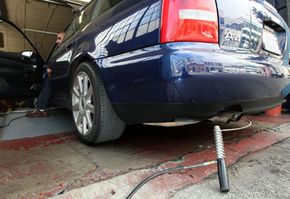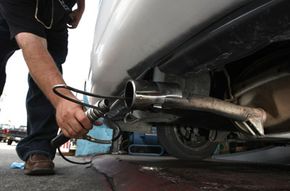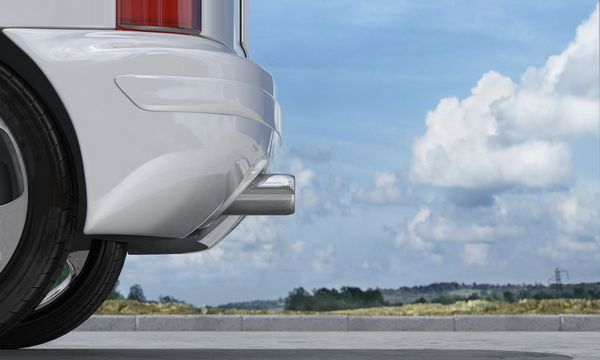Eco-friendly automobile owners are becoming increasingly concerned about what's coming out of their cars' tailpipes. When an engine burns fossil fuels, it emits a wide variety of potentially harmful substances: carbon monoxide, greenhouse gases, sulfur oxides, nitrogen oxides, hydrocarbons and so on.
What do those substances really mean for the environment and our health? The news isn't good: Carbon monoxide makes it harder for the blood to carry oxygen and can cause heart and lung disease. Sulfur dioxide can cause acid rain. Nitrogen oxides cause the yellowish brown haze that hovers over crowded cities. Carbon dioxide can lead to the dreaded greenhouse effect -- the trapping of gases and heat to make the atmosphere warmer than it should be -- and hydrocarbons can cause cancer [source: Electric Auto Association].
Advertisement
In other words, we're all driving around in machines that are destructive to our health, our environment and -- as many scientists believe -- are heavily contributing to global warming.
We're still a few years away from having affordable and readily available cars on the road that expel no harmful emissions, like hydrogen fuel cell or all-electric vehicles. Until then, there are a few things that all of us can do to cut down on fuel consumption and car pollution. For example, we can focus on fuel efficiency and eco-friendly driving by buying low-emissions vehicles and making sure our cars pass the yearly emissions inspections mandated in many states. These inspections test your car's safety features and mechanical state, and they also make sure your car's not polluting too much, which is especially important for older cars that lack today's modern emissions-control technology.
Because of the dangers they pose to the environment, vehicle emissions need to be closely controlled and monitored to keep the atmosphere above our roads and cities from filling with smog. For this purpose, the federal government and some states have established emission certification standards -- regulations that govern the amount of harmful emissions that vehicles can lawfully release.
In this article, we'll discuss how the emission certification standards work and learn more about green driving.
Advertisement


